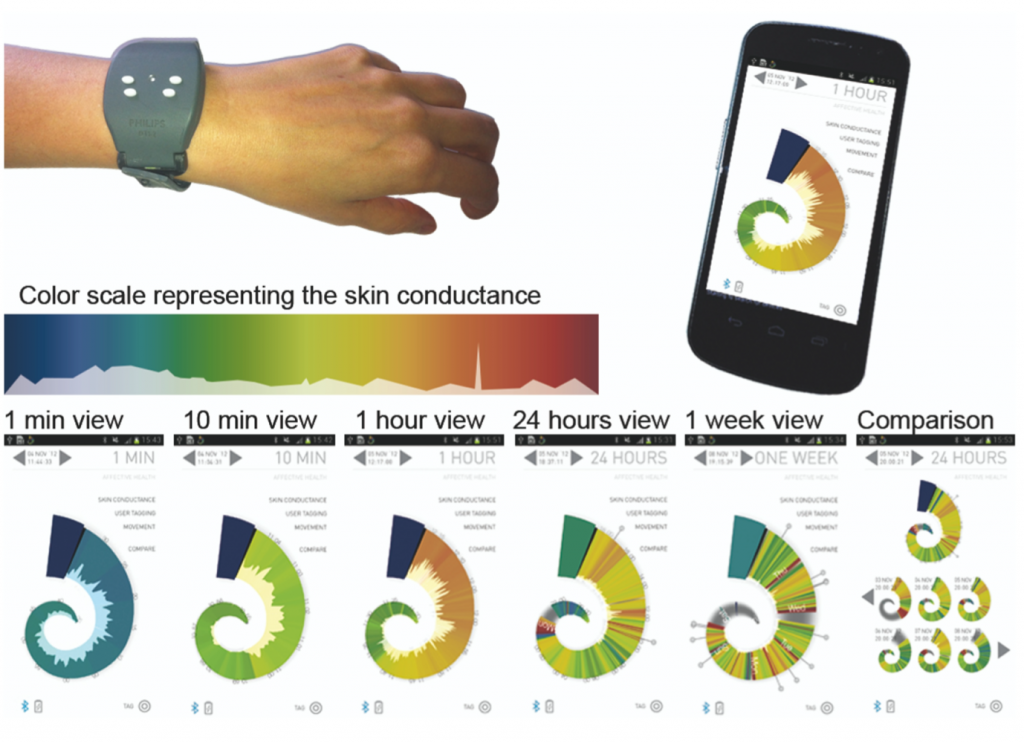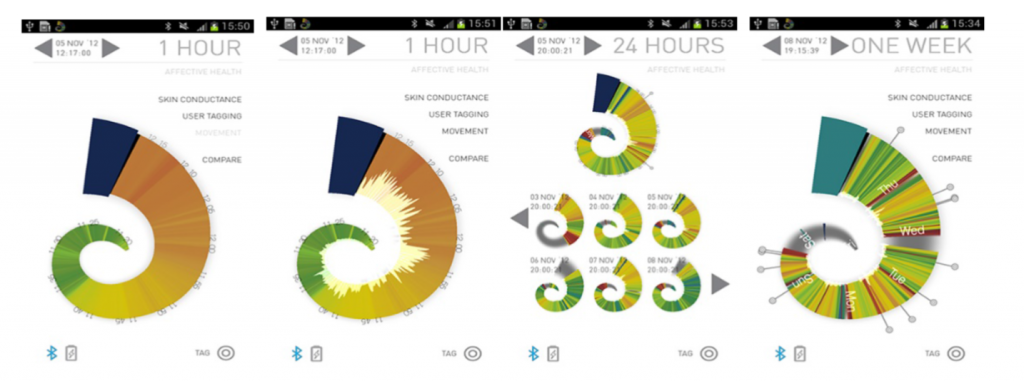This seems to be the era of ‘smart’ technology. Whether you want to clean your house, open the front door, check your vital signs, or track your sleep, all are possible thanks to an array of smart devices that require minimal effort on our part.
Researchers from Sweden and Lancaster University have teamed up and come up with a device that can detect your mood by interpreting biological signals produced by skin conductance.
Skin Conductance – a way to measure emotions
Skin conductance, also known as electrodermal activity (EDA), measures the skin’s electrical conductivity which can vary according to how much someone sweats. Changes in the body’s sweat gland activity are modulated by the sympathetic nervous system and can depend on changes in temperature as well as levels of emotional arousal. An increase in emotional arousal, which can be due to facing something scary, threatening or joyful, increases sweat gland activity and therefore increases skin conductance. EDA is captured using skin electrodes which are mostly applied on the hand and foot, where the highest number of sweat glands are found. However, a drawback of EDA is that it cannot detect the type of emotion, only the intensity of the emotions as both positive and negative stimuli can increase the skin conductance.

According to the study, researchers used the Philips DTI-2 wristband to collect user data. The wristband’s skin conductance sensors and accelerometers helped monitor participant’s arousal and movement respectively. To help analyze and visualize the collected data, researchers designed a mobile application named ‘Affective Health’. Affective health displayed the information in the form of colorful spiral graphics. Skin conductance was expressed using a color wheel with red mapping to the highest value of skin conductance while the movement was mapped to the area size.
A total of 23 participants, 13 males, and 10 females were recruited for the research. Each participant was asked to use the device for 4-8 weeks. To keep an open design that can invite a participant’s own interpretations of their data, the researchers gave them as little information as possible.
The participants were told they were receiving a device that would help them reflect on their bodily and emotional reactions, however, no specific use of the device was mentioned. Instead, they were told the mechanics of skin conductance and how it varies with the intensity of emotional and physical reactions. The interpretation of the values was left entirely on the participants.

The open design of the study allowed multiple interpretations or proto-practices to arise such as stress management, enhancing sports performance, emotion tracking, logging life events, or changing one’s behavior.
However, researchers believe a second step is required in the design process as the device is not specific for any one specific role.
Professor Corina Sas, the lead researcher of the study, believes that the results provide valuable insight for designers of wearable devices and can help design devices that will allow people to better understand their bodily functions.
References:
Sanches, P., Hook, K., Sas, C., & Stahl, A. (2019). Ambiguity as a resource to inform proto-practices: The case of skin conductance. ACM Transactions on Computer-Human Interaction (TOCHI), 26(4), [21]. https://doi.org/10.1145/3318143
Farnsworth, B. (2018, July 17). What is GSR (galvanic skin response) and how does it work? [Web log post]. Retrieved May 28, 2020, from https://imotions.com/blog/gsr/




